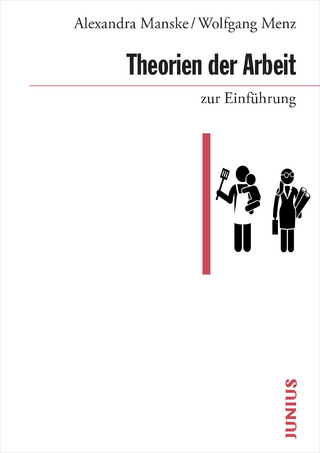
Death, Society, and Human Experience
Routledge (Verlag)
978-0-205-61053-2 (ISBN)
- Titel erscheint in neuer Auflage
- Artikel merken
The text focuses on both individual and societal attitudes and how they influence both how and when we die and how we live and deal with the knowledge of death and loss. Robert Kastenbaum is a renowned scholar in the field who developed one of the world's first death education courses and introduced the first text for this market.
Bob Kastenbaum’s exploits as skating messenger apparently qualified him to become editor of two community newspapers, an eccentric career trajectory that somehow led to a graduate scholarship in philosophy and a Ph.D. in psychology at the University of Southern California (1959). He was most interested in fields of psychological study that barely existed at the time: lifespan development and aging, time perspective, creativity, and death and dying. Kastenbaum became part of an emerging cadre that overcame the prevailing neglect and resistance to these issues. He worked in varied settings as clinician, researcher, activist, hospital administrator, educator, and author. The innovative programs he introduced into a geriatric hospital and his article, “The Reluctant Therapist” have been credited with preparing the way for increased attention to the needs and potentials of vulnerable elders and terminally ill people. With Dick Kalish, he founded Omega, the first peer-reviewed journal focused on death-related issues. Kastenbaum taught the first regularly-scheduled university course on death and dying and came up with the first textbook (Death, Society, & Human Experience, 1977). He also established the first university-based educational and research center on death and dying (Wayne State University, 1966). His other books include The Psychology of Death (1972, 1990, 2000); Dorian, Graying: Is Youth the Only Thing Worth Having? (1995), and On Our Way. The Final Passage Through Life and Death (2004). He has also served as editor of the Macmillan Encyclopedia of Death and Dying, (2003) and two previous encyclopedias. In the public sphere he has served as a co-founder of The National Caucus on Black Aging, consultant to the United States Senate Special Subcommittee on Aging, and participant in developing the Veterans Administration’s geriatric research and educational centers, and the landmark National Hospice Demonstration Project. Kastenbaum lives in Tempe, Arizona with Bunny (wife), Angel (The Incredible Leaping Dog), enhanced by Pumpkin and Snowflake in the cat department. Along with his continuing research interests, Kastenbaum has been writing book and verse for musicals and operas. He notes that nobody has died in the two most recently premiered operas (Closing Time; American Gothic, music by Kenneth LaFave), but cannot make any such promises about the next opera.
Found in This Section:
1. Brief Table of Contents
2. Comprehensive Table of Contents
BRIEF TABLE OF CONTENTS:
Preface
Chapter 1: As We Think About Death
Chapter 2: What is Death?
Chapter 3: The Death System
Chapter 4: Dying
Chapter 5: Hospice and Palliative Care
Chapter 6: End of Life Issues and Decisions
Chapter 7: Suicide
Chapter 8: Violent Death: Murder, Terrorism, Genocide, Disaster, and Accident
Chapter 9: Euthanasia. Assisted Death, Abortion, and the Right to Die
Chapter 10: Death in the World of Childhood
Chapter 11: Bereavement, Grief, and Mourning
Chapter 12: The Funeral Process
Chapter 13: Do We Survive Death?
Chapter 14: How Can We Help?
Chapter 15: Good Life, Good Death?
COMPREHENSIVE TABLE OF CONTENTS:
*Every chapter ends with Summary, References, and Glossary
Chapter 1: AS WE THINK ABOUT DEATH
Not Thinking About Death: A Failed Experiment
Your Self-Inventory Of Attitudes, Beliefs, And Feelings
Some Answers–And The Questions They Raise
Man Is Mortal: But What Does That Have To Do With Me?
Anxiety, Denial, And Acceptance: Three Core Concepts
Studies And Theories Of Death Anxiety 18 Major Findings From Self-Reports Of Death Anxiety
Major Findings From Self-Reports of Death Anxiety
Theoretical Perspectives on Death Anxiety
Accepting and Denying Death
Chapter 2: WHAT IS DEATH?
Ideas About The Nature And Meaning Of Death
Death as Observed, Proclaimed, and Imagined
Biomedical Approaches to the Definition of Death
Event Versus State
What Does Death Mean?
Interpretations of the Death State
Conditions that Resemble Death
Death as a Person
Conditions that Death Resembles
The Undead
Death as an Agent of Personal, Political, and Social Change
Chapter 3: THE DEATH SYSTEM
A WORLD WITHOUT DEATH
BASIC CHARACTERISTICS OF THE DEATH SYSTEM
COMPONENTS OF THE DEATH SYSTEM
Functions of the Death System
Tsunami, Cyclone, Earthquake, and Hurricane Katrina–Challenges to the Death System
Hurricanes Katrina and Rita
How Our Death System Has Been Changing–And the “Deathniks” Who are Making a Difference
Chapter 4: DYING
The Moment of Death: Is It Vanishing?
What is Dying, and When Does it Begin?
Trajectories of Dying: From Beginning to End
Guarded Feelings, Subtle Communications
Individuality and Universality in the Experience of Dying
Theoretical Models of the Dying Process
Chapter 5: Hospice and Palliative Care
Hospice: a New Flowering from Ancient Roots
Standards of Care for the Terminally Ill
The Hospice in Action
Relief of Pain and Suffering
Hospice Access, Decision Making, and Challenges
Dame Cicely Saunder’s Reflections on Hospice
Chapter 6: End-0f-Life Issues and Decisions
From Description to Decision Making
Who Should Participate in End-Of-Life Decisions
The Living Will and its Impact
Right-To-Die Decisions that We Can Make
A Right Not to Die? The Cryonics Alternative
Organ Donation
Funeral-Related Decisions
Chapter 7: Suicide
What Do the Statistics Tell Us?
Four Problem Areas
Some Cultural Meanings of Suicide
A Powerful Sociological Theory of Suicide
Some Individual Meanings of Suicide
Facts and Myths about Suicide
Suicide Prevention
Chapter 8: Violent Death: Murder, Terrorism, Genocide, Disaster, and Accident
Murder
Terrorism
Accident and Disaster
Chapter 9: Euthanasia, Assisted Death, Abortion, and the Right to Die
“I Swear By Apollo the Physician”: What Happened to the Hippocratic Oath?
Our Changing Attitudes Toward a Right to Die
The Right-To-Die Dilemma: Case Examples
Terri Schiavo: Who Decides?
Dr. Kevorkian and the Assisted-Suicide Movement
Assisted Death in the United States
Induced Abortion
Chapter 10: Death in the World of Childhood
Respecting the Child’s Concern and Curiosity
Adult Assumptions About Children and Death
Children Do Think About Death
Concepts and Fears: Developing Through Experience
How Do Children Cope with Bereavement?
The Dying Child
Sharing the Child’s Death Concerns: A Few Guidelines
The “Right” to Decide: Should the Child’s Voice Be Heard?
Chapter 11: Bereavement, Grief and Mourning
Some Responses to Loss
Defining Our Terms: Bereavement, Grief, Mourning
What Kind of Grief?
Theories of Greif
How Do People Recover from Grief?
Bereavement in Later Life
Are Bereaved People At Higher Risk for Death?
How Well Do We Support the Bereaved?
Meaningful Help for Bereaved People
Widows in Third World Nations
On the Future of Grieving and Mourning
Chapter 12: The Funeral Process
A Sampler of Responses to the Dead
What Do Funerals Mean to Us?
From Dead Body to Living Memory: A Process Approach
Making Death “Legal”
What Does the Funeral Process Accomplish?
Memories of Our People: Cemeteries in the United States
The Place of the Dead in Society: Yesterday and Today
The Funeral Director’s Perspective
Improving the Funeral Process
Spontaneous Memorialization in Response to Violent Death
Integrity and Abuse in the Funeral and Memorial Process
Chapter 13: Do We Survive Death?
Concept of Survival in Historic Perspective
Heavens and Hells
The Desert Religions and Their One God
What Other People Believe Today
Can Survival Be Proved?
When Spiritism Was in Flower
Near-Death Experiences: Evidence for Survival?
Should We Survive Death?
But What Kind of Survival?
Assisted and Symbolic Survival
The Suicide-Survival Connection
Chapter 14: How Can We Help?
“Compassionate Fatigue”: Burnout and the Healthcare Provider
Death Educators and Counselors: The “Border Patrol”
Death Education in Historical Perspective
Death Education and Counseling: The Current Scene
Counseling and The Counselors
How We All Can Help
Chapter 15: Good Life, Good Death?
Three Paths to Death
A Father Dies: A Mission Begins
A Shift in the Meaning of Life and Death
Utopia: A Better Death in a Better Place?
“The Good Death”: Fantasy or Reality?
Extinction: Death of Life or Death of Death?
From Good Life to Good Death: A Personal Statement
| Erscheint lt. Verlag | 23.1.2009 |
|---|---|
| Verlagsort | New York |
| Sprache | englisch |
| Maße | 191 x 235 mm |
| Gewicht | 820 g |
| Themenwelt | Sozialwissenschaften ► Soziologie ► Mikrosoziologie |
| ISBN-10 | 0-205-61053-6 / 0205610536 |
| ISBN-13 | 978-0-205-61053-2 / 9780205610532 |
| Zustand | Neuware |
| Informationen gemäß Produktsicherheitsverordnung (GPSR) | |
| Haben Sie eine Frage zum Produkt? |
aus dem Bereich



